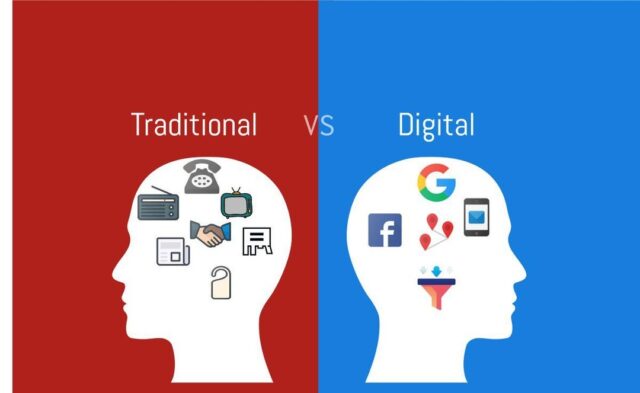
In the rapidly evolving digital age, the distribution of content has undergone a profound revolution. Gone are the days when we relied solely on traditional media channels like television, radio, and print for our daily dose of entertainment and information. Today, the digital content distribution landscape is marked by innovation and disruption, with platforms like OnlyFans at the forefront of this transformation.
The proliferation of high-speed internet, smartphones, and streaming services has fundamentally altered how we access and consume content. This revolution has democratized content creation and distribution, allowing individuals and small creators to reach global audiences without the need for massive budgets or established production houses.
At the heart of this revolution are subscription-based platforms such as OnlyFans. These platforms have not only redefined the way content is distributed but have also challenged traditional notions of entertainment, art, and fandom. OnlyFans, in particular, stands out as a trailblazer in this domain, offering a unique space where creators can monetize their content directly from their audience.
Traditional vs. Digital Content Distribution

Traditionally, media distribution was a top-down model, where a handful of media conglomerates controlled the production and dissemination of content. This centralized approach often limited diversity and creativity in content creation.
In contrast, the rise of digital content distribution has dismantled these barriers, empowering individuals and smaller creators to reach their target audience directly. This shift has opened doors to a wide range of content, from niche interests to underrepresented voices.
Digital distribution offers several advantages, including accessibility, affordability, and interactivity. Consumers can access content anytime, anywhere, and creators can experiment with new formats and engage with their audience in real time.
The Emergence of Subscription-Based Platforms

Subscription-based platforms have gained prominence as a sustainable model for content creators. These platforms provide a steady income stream, reducing reliance on advertising revenue and sponsorships.
OnlyFans, founded in 2016, has become a household name in the world of subscription-based content. We will trace its journey from inception to its current status as a major player in the digital content landscape.
We will also explore the unique features and offerings that set OnlyFans apart from other platforms. These include its focus on adult content, personalized interactions, and the ability for creators to set their subscription prices and receive tips from fans.
The rise of subscription-based platforms like OnlyFans has far-reaching implications for both content creators and consumers. We will examine how creators can benefit from direct monetization, and how consumers can enjoy exclusive content and a deeper connection with their favorite creators.
As we journey through the evolving landscape of digital content distribution, it becomes clear that platforms like OnlyFans are reshaping not only the way we consume content but also how creators connect with their audience. In the next sections of this article, we will delve into content monetization strategies, challenges, and controversies, and explore the exciting future of digital distribution.
Content Monetization Strategies

In the realm of digital content distribution, content creators have had to explore diverse monetization strategies. The traditional advertising model, once dominant, relied on ad placements and sponsorships to generate revenue. However, the rise of ad-blockers and changing consumer preferences has shifted the focus towards direct payment models.
Platforms like OnlyFans have been at the forefront of this shift. Instead of relying on advertising, creators on OnlyFans can charge their subscribers a monthly fee, unlocking access to exclusive content. This direct payment model ensures that top OnlyFans models and content creators receive a more predictable income stream, making it an attractive alternative to traditional advertising.
Microtransactions, often associated with in-game purchases, have found their way into content monetization strategies. Creators can offer small, affordable purchases within their content, such as premium posts, personalized shoutouts, or virtual gifts. This microtransaction approach not only fosters engagement but also allows best Only Fans models and creators to capitalize on their popularity by providing additional value to their subscribers.
To illustrate the effectiveness of these monetization strategies, we can examine case studies of best Only Fans girls and content creators who have achieved remarkable success. By diversifying their income streams and engaging directly with their audience, these individuals have demonstrated that the digital age offers unprecedented opportunities for financial sustainability in content creation. Their stories can inspire others to explore innovative monetization models and build a loyal fan base.
Challenges and Controversies

One of the most significant concerns in the digital content distribution landscape is the issue of content censorship. As platforms like OnlyFans grow in popularity, they often face scrutiny and pressure to moderate content. This raises questions about the balance between free expression and responsible content oversight. The experiences of OnlyFans girls who navigate these challenges can shed light on the evolving landscape of content moderation.
Another pressing issue revolves around privacy and data security. Content creators and consumers alike entrust platforms with their personal information, raising concerns about data breaches and misuse. The digital content distribution industry must grapple with these concerns to maintain trust among users. Case studies and best practices regarding data security are essential for addressing these issues.
Regulatory challenges and legal complexities are inherent in any evolving industry. As platforms like OnlyFans continue to redefine content distribution, they must navigate a constantly changing legal landscape. Their experiences provide valuable insights into how regulatory challenges impact the industry and shape its future.
The Future of Digital Content Distribution

The future of digital content distribution hinges on understanding and adapting to evolving consumer preferences. As technology continues to shape how content is consumed, consumers are becoming increasingly discerning and selective. They desire personalized, immersive, and interactive experiences. Platforms that can cater to these preferences by offering tailored content and engaging experiences are likely to thrive.
Advancements in technology will continue to play a pivotal role in shaping the digital content distribution landscape. Emerging technologies like virtual reality (VR), augmented reality (AR), and artificial intelligence (AI) are poised to revolutionize how content is created and consumed. VR and AR, for example, can offer entirely new dimensions of immersive storytelling, while AI can enable content curation and recommendation systems that understand individual preferences better than ever before.
Blockchain technology and non-fungible tokens (NFTs) have already begun to disrupt the content distribution ecosystem. Blockchain can provide transparent, secure, and decentralized systems for content creators to monetize their work while ensuring fair compensation. NFTs, in particular, offer the potential for creators to tokenize their content, allowing for unique ownership and trading of digital assets. The integration of blockchain and NFTs into content distribution platforms could redefine ownership and royalties in the digital age.
Content Creators and Their Changing Roles

Content creators are experiencing a shift in their roles, moving from traditional models where intermediaries controlled distribution to direct distribution models. This empowerment allows creators to have greater control over their content, brand, and revenue streams. Platforms like OnlyFans have paved the way by enabling creators to build direct relationships with their audience and monetize their work without middlemen.
In the future, content creators are likely to further diversify their income streams. This diversification could involve leveraging multiple platforms, merchandising, live events, and even investing in ancillary businesses. The ability to adapt and explore new avenues for income will be essential for long-term sustainability as content creators navigate the evolving landscape.
Building a personal brand and delivering personalized content experiences will be central to the success of content creators. In a crowded digital space, the ability to connect with an audience on a personal level and offer unique value will differentiate creators. Those who excel in branding and personalization will continue to capture and retain loyal followers.












